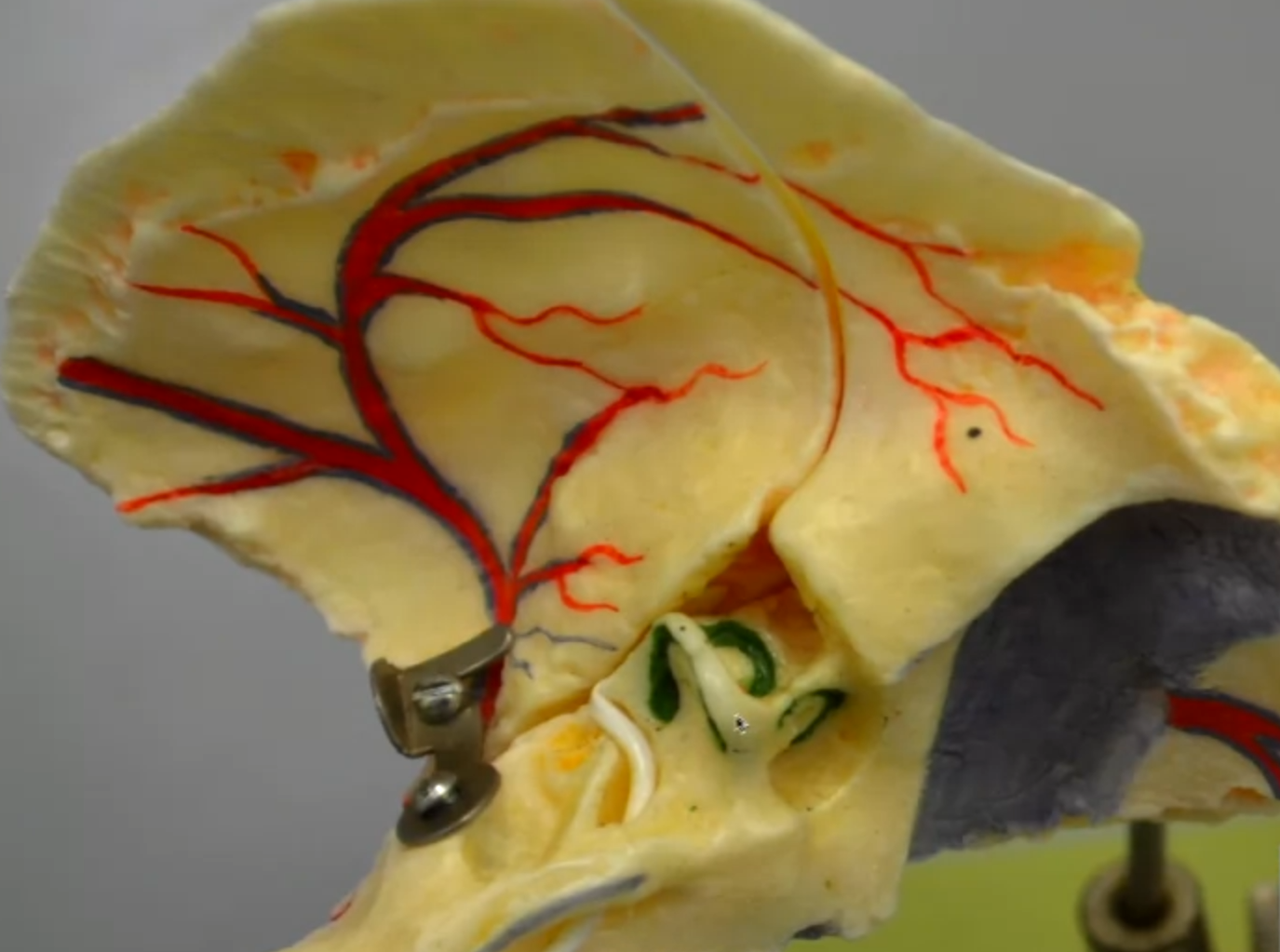Lecture Notes: Structure of the Vestibular Apparatus
I. Recap: Inner Ear and Planes of Acceleration
- This section revisits the bony labyrinth within the skull.
- It highlights the three planes of linear acceleration (forward/backward, side-to-side, up/down) and the three planes of rotational acceleration (yaw, pitch, roll).
II. Semicircular Canals for Rotational Acceleration
-
The lecture focuses on the semicircular canals, which are fluid-filled tubes responsible for detecting rotational acceleration.
-
There are three semicircular canals, each oriented at a right angle to the other, allowing us to sense rotation in all three planes.
-
When these canals malfunction, it can lead to vertigo, a sensation of spinning or dizziness.

 III. Otoconial Organs for Linear Acceleration
III. Otoconial Organs for Linear Acceleration -
The otoconial organs, also located within the vestibule, are responsible for detecting linear acceleration.
-
There are two otoconial organs:
- One detects horizontal linear acceleration (in any direction).
- The other detects vertical linear acceleration (primarily gravity).
-
These organs contain otoconial masses, and dysfunction can lead to disequilibrium, a feeling of imbalance or like you might fall.
IV. Comparison of Vertigo and Disequilibrium
- Vertigo is a sensation of spinning or dizziness, often caused by problems with the semicircular canals.
- Disequilibrium is a feeling of imbalance or like you might fall, often caused by problems with the otoconial organs.
V. Next Topic: Using Vestibular Information
The lecture will now discuss how the vestibular system processes this information to produce sensations and how we use those sensations. Hair cells